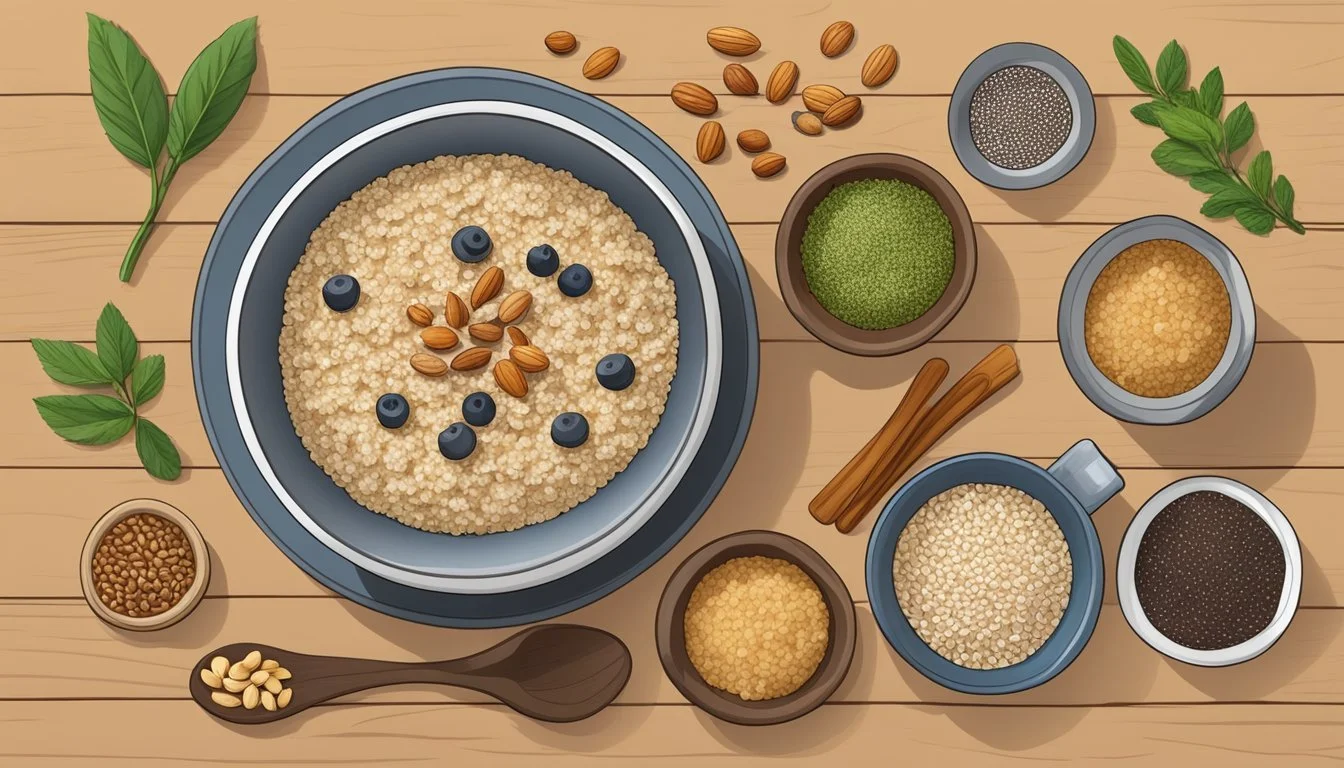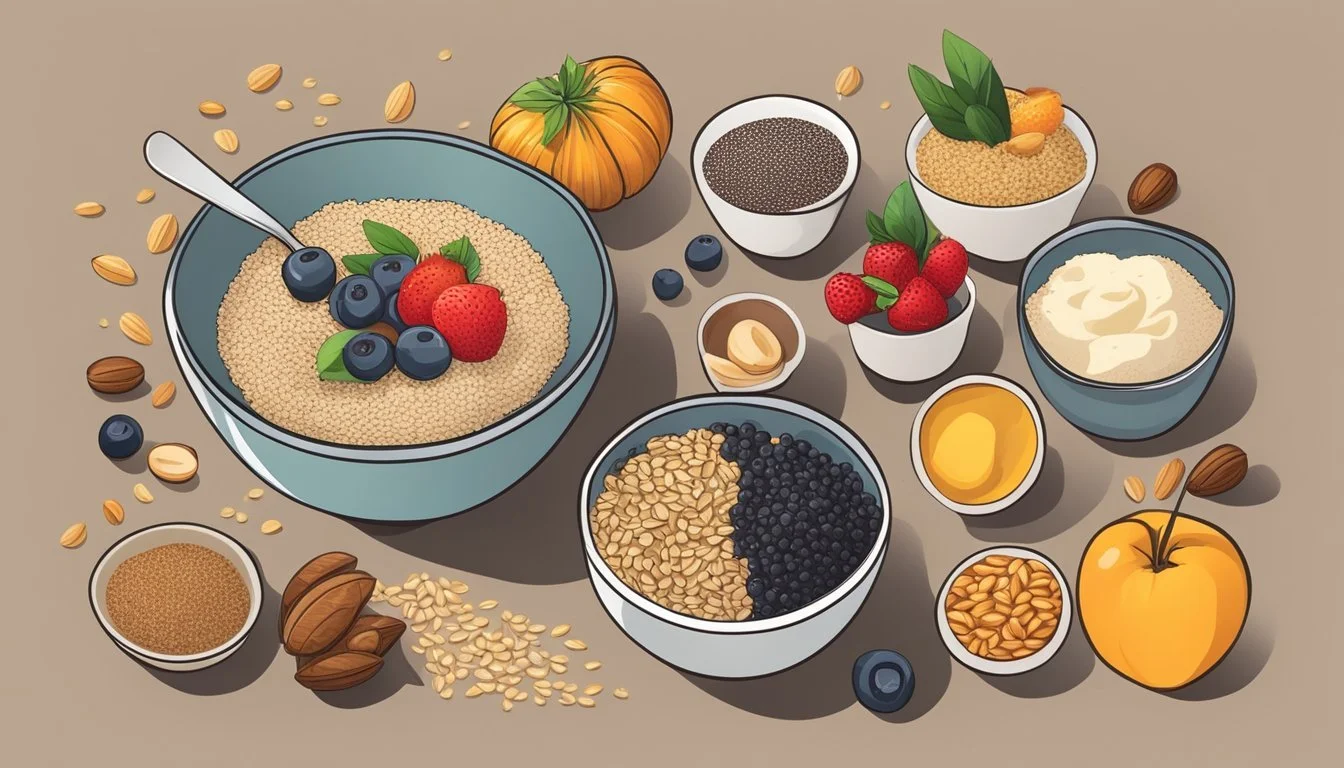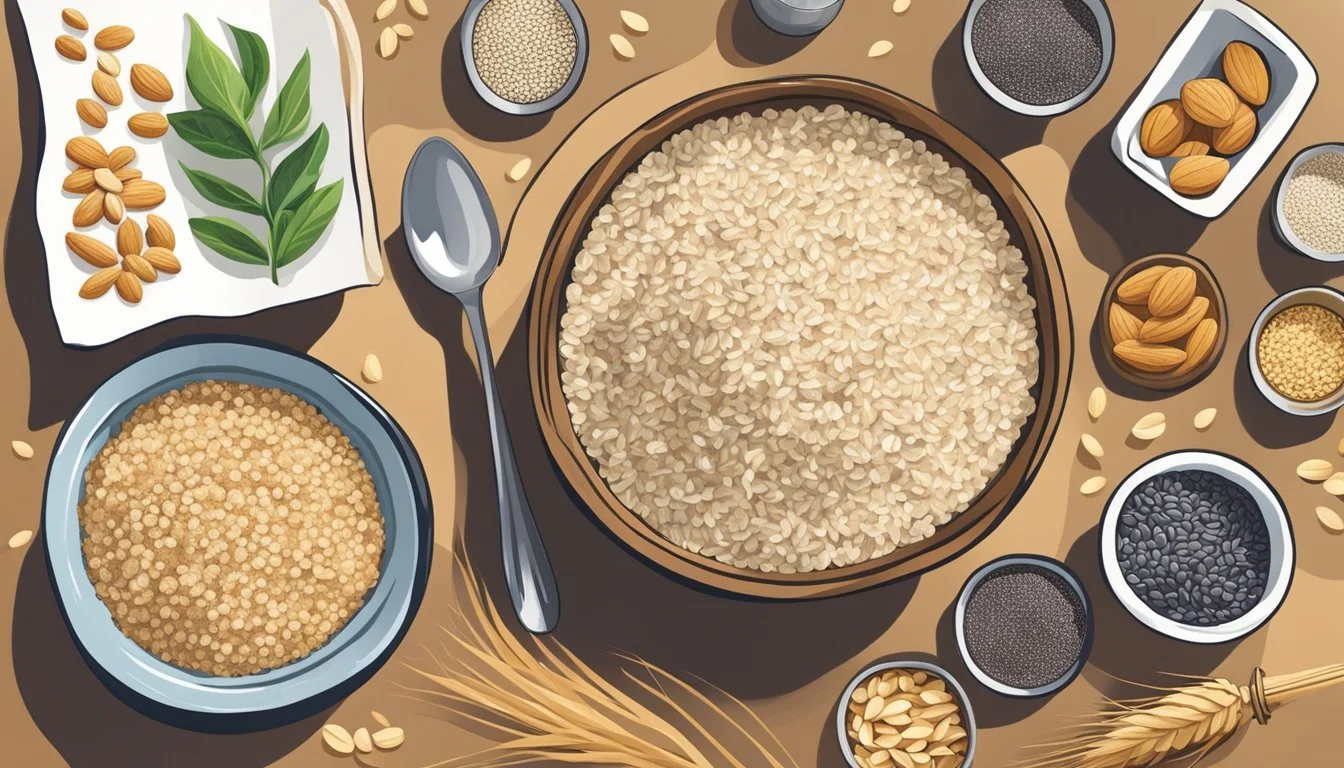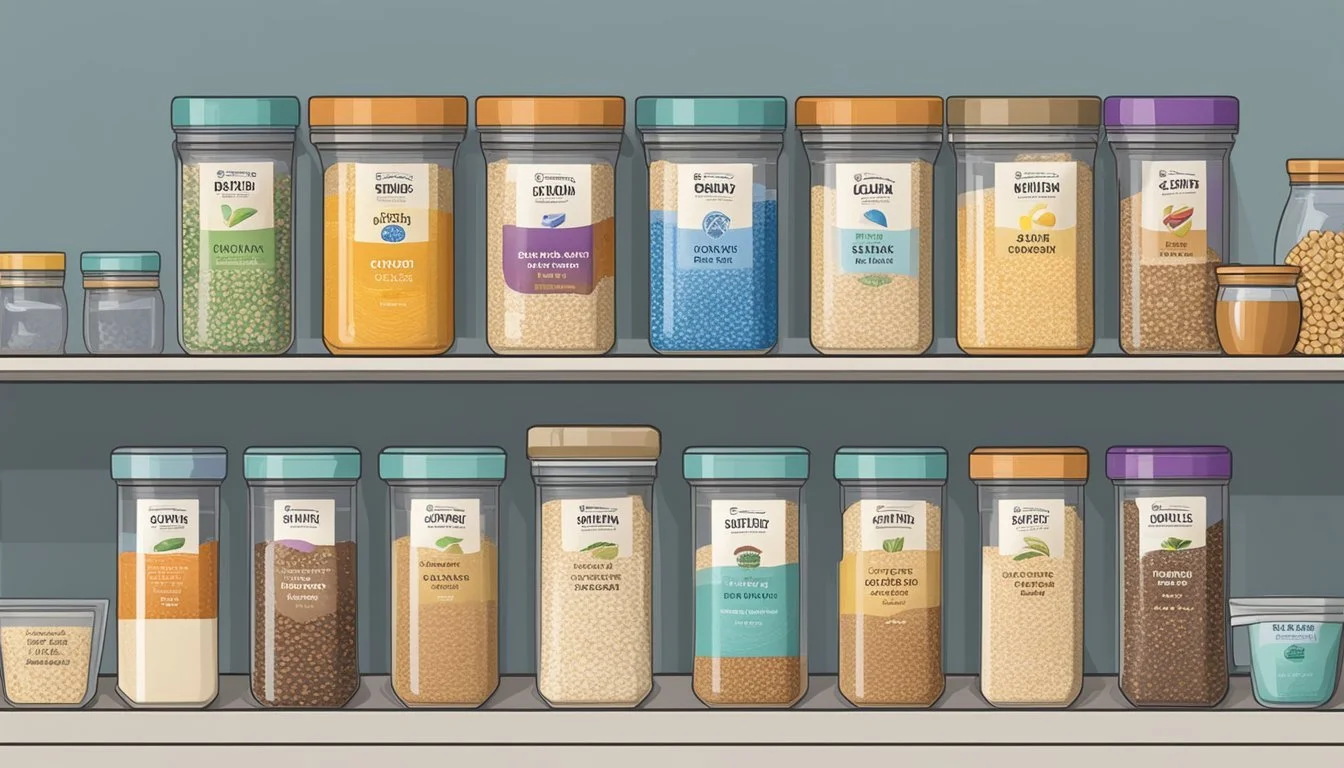Steel-cut Oats Substitutes
Healthier Choices and Alternatives
Finding the right substitute for steel-cut oats can be a game-changer for anyone looking to alter their diet or experiment with new recipes. Rolled oats are a popular alternative and can be used with a 1:1 ratio, offering a similar whole grain experience with faster cooking times. If texture is your main concern, buckwheat groats can provide a comparable nutty flavor and chewy bite, especially when toasted before cooking.
Another viable alternative is quinoa, which delivers a high-protein option with a texture that can mimic oatmeal when cooked appropriately. For those who prefer a softer and creamier option, soaking steel-cut oats overnight can make them more adaptable, although it requires some extra planning.
Whether you are after nutritional benefits or simply a quicker meal prep, these substitutes can help maintain the wholesome qualities of steel-cut oats. Adjusting the liquid ratios and cooking times is key to achieving the desired texture and flavor, ensuring your dishes remain both nutritious and delicious.
The Nutritional Profile of Steel-Cut Oats
Steel-cut oats are rich in nutrients, making them a valuable addition to a balanced diet. They offer a good balance of fiber, protein, vitamins, and minerals, which contribute to various health benefits including improved heart health and stable blood sugar levels.
Fiber and Protein Content
Steel-cut oats are a noteworthy source of both fiber and protein. A typical serving (about 1/4 cup dry) contains roughly 5 grams of fiber and 7 grams of protein. The high fiber content promotes digestive health and helps in maintaining regular bowel movements.
Additionally, the protein in steel-cut oats supports muscle repair and growth. Due to their intact grain structure, steel-cut oats digest more slowly than other oat forms, aiding in prolonged satiety. This slower digestion also assists in better blood sugar control, reducing spikes after meals.
Vitamins and Minerals
Steel-cut oats provide a variety of essential vitamins and minerals. They are particularly high in:
Iron: Critical for oxygen transport in the blood. One serving offers around 10% of the Recommended Daily Allowance (RDA).
Magnesium: Important for muscle and nerve function, contributing about 15% of the RDA per serving.
Zinc: Supports the immune system and is provided at around 6% of the RDA.
The oats also contain smaller amounts of potassium, phosphorus, and various B vitamins, each playing their own roles in maintaining bodily functions.
Health Benefits
The nutritional profile of steel-cut oats contributes to numerous health benefits. Their high fiber content can help lower cholesterol levels by binding with cholesterol-rich bile acids and removing them from the body. This process, in turn, supports heart health.
Moreover, the protein and complex carbohydrates in steel-cut oats aid in stabilizing blood sugar levels, making them an excellent option for those managing diabetes. The nutrients found in these oats also promote overall energy levels and can enhance metabolic health.
Given their nutrient density, incorporating steel-cut oats into a regular diet can support diverse aspects of physical well-being.
Identifying Substitutes for Steel-Cut Oats
Substituting steel-cut oats can enhance your recipes with new flavors or cater to dietary needs. Here, you'll find options with similar textures and nutritional benefits, gluten-free alternatives, and quick-cooking substitutes.
Similar Texture and Nutritional Profile
Buckwheat Groats: Buckwheat offers a nutty flavor and chewy texture akin to steel-cut oats. Toasting the groats before cooking enhances the flavor. Cook using a 2:1 liquid-to-groat ratio, simmering for 15-20 minutes until tender.
Quinoa: Quinoa is a complete protein that mimics the nuttiness and chewiness of steel-cut oats. Rinse thoroughly before cooking. Use a 2:1 liquid-to-quinoa ratio, bringing it to a boil and simmering for 15 minutes.
Millet: Millet has a mild flavor but a similar texture. It’s best when toasted first. Use a 2.5:1 liquid-to-millet ratio and cook for 20 minutes until fluffy and tender.
Gluten-Free Alternatives
Rice Flakes: Rice flakes, or flattened rice, are a versatile gluten-free option. They can be white or brown rice flakes. Use them in porridge or breakfast bars, with a 2:1 liquid-to-flake ratio.
Quinoa: Naturally gluten-free, quinoa offers significant protein content. Its preparation is straightforward, making it an ideal substitute. Rinse before cooking with a 2:1 liquid-to-quinoa ratio, simmering for 15 minutes.
Amaranth: Amaranth provides a slightly nutty flavor and is gluten-free. It’s rich in protein and minerals. To cook, use a 3:1 liquid-to-amaranth ratio, and simmer for about 20 minutes.
Quick Cooking Substitutes
Rolled Oats: Rolled oats are quicker to cook than steel-cut oats, typically ready in 10-15 minutes. They retain some chewiness and can be used in most recipes where steel-cut oats are called for.
Instant Oats: Instant oats cook in just 1-2 minutes, making them the fastest option. While they lack the chewy texture, they can be a quick fix for busy mornings.
Quick Oats: Quick oats fall between rolled and instant oats in terms of cooking time, usually ready in about 1-2 minutes. Use a 2:1 liquid-to-oat ratio, bringing to a boil and then simmering.
Substitute Considerations for Specific Cuisines
Choosing the right substitutes for steel-cut oats depends on the cuisine you're preparing. Key substitutes like barley, buckwheat groats, chia seeds, and flaxseeds can enhance baked goods, porridges, and smoothies.
Baking with Oat Alternatives
Rolled oats and quick oats are common substitutes in baking. Pulsing them in a food processor can achieve a texture similar to steel-cut oats in cookies and granola bars.
Oat flour is another great alternative for baked goods, offering a fine texture for recipes like cakes and muffins. Barley flour can also be used but may impart a slightly different flavor and texture.
For gluten-free options, chia seeds and flaxseeds can be incorporated. They provide a nutty flavor and are rich in nutrients, making them ideal for health-focused recipes.
Porridge and Savory Dishes
Substitutes like buckwheat groats and barley can replace steel-cut oats in hearty porridges or savory dishes. Toasting buckwheat groats before cooking can enhance their nutty flavor, making them a tasty and nutritious choice.
For a creamier texture, quinoa and millet can be used. These grains cook faster and absorb flavors well, making them versatile for both sweet and savory porridges.
Adding vegetables and herbs to these grains can create robust savory dishes. Chia seeds can be used to thicken recipes while adding a nutritional boost.
Alternative Grains in Smoothies and Snacks
Chia seeds and flaxseeds are excellent in smoothies, providing a thick texture and a rich nutritional profile. They can also be used in homemade energy bars.
For a chewy texture, rolled oats can substitute steel-cut oats in snacks like granola bars and energy bites. They absorb moisture and bind ingredients well.
Adding buckwheat groats to smoothies enhances their nutritional value and adds a slightly crunchy texture. These groats can also be included in snack mixes.
Using a mix of grains and seeds can optimize the health benefits and textures of your smoothies and snacks.
The Impact of Substitutes on Cooking and Recipes
When substituting steel-cut oats with other grains, cooking times, liquid ratios, flavor, and texture all shift. It’s essential to understand how these factors affect your recipes for successful outcomes.
Adjusting Liquid Ratios
Different grains absorb liquid at varying rates. For instance, buckwheat groats and quinoa require specific liquid-to-grain ratios to achieve the desired texture.
Buckwheat groats: Use a 2:1 liquid-to-groat ratio.
Quinoa: For porridge, use a 3:1 liquid-to-seed ratio; for a fluffy texture, use 2:1.
These liquid adjustments ensure that substitutes like quinoa and buckwheat cook properly and maintain the integrity of your dish.
Altering Cooking Methods and Times
Each substitute necessitates different cooking approaches. Steel-cut oats typically require longer cooking times compared to substitutes.
Quinoa: Cooks in approximately 15-20 minutes.
Buckwheat groats: Toasting before simmering speeds up cooking and enhances flavor.
Using a slow cooker might adapt well to some substitutes, allowing for even and thorough cooking without constant attention.
Flavor Profile Matching
Matching flavor profiles helps in maintaining dish harmony. Steel-cut oats have a nutty, earthy flavor, so substitutes should complement this.
Buckwheat groats: When toasted, they emulate the nuttiness of steel-cut oats.
Quinoa: Offers a mild, slightly nutty taste, fitting well in both savory and sweet dishes.
Each substitute's unique flavor can either enhance or change the dish, depending on how it's used.
Texture Considerations in Recipes
Textures of substitutes vary widely and can impact the dish's mouthfeel.
Steel-cut oats: Known for their chewy, hearty texture.
Oat groats: When used in a 1:1 ratio, they retain a similar texture to steel-cut oats.
Rice flakes: Provide a much softer texture and might be best for porridges.
Choosing the right substitute ensures the dish meets texture expectations, whether it’s a chewy bite or a smoother consistency.
Health and Dietary Concerns When Choosing Substitutes
When selecting substitutes for steel-cut oats, it's essential to consider various health factors, including blood sugar and cholesterol management, weight control, muscle maintenance, and dietary restrictions. Here are the key points to keep in mind:
Managing Blood Sugar and Cholesterol
The type of oats or grains consumed can significantly impact blood sugar and cholesterol levels. Steel-cut oats have a lower Glycemic Index (GI) compared to instant oats, meaning they release glucose more slowly into the bloodstream.
Buckwheat groats and oat groats, as substitutes, share similar low GI properties. Rolled oats also provide a good balance, although they may have a slightly higher GI. Whole grains like these can help manage cholesterol levels due to their high fiber content, particularly beta-glucan.
Weight Management and Satiety
Feeling full and satisfied is crucial for effective weight management. Steel-cut oats are high in both soluble and insoluble fiber, which helps promote a feeling of fullness and aids in digestion.
Substitutes such as buckwheat groats and rolled oats also offer high fiber content, contributing to prolonged satiety. The low calorie yet nutrient-dense nature of these grains makes them suitable for weight management.
Muscle Maintenance and Growth
Protein is essential for muscle maintenance and growth. Steel-cut oats provide approximately 4 grams of protein per serving. Substitutes like buckwheat groats are also rich in protein and offer additional benefits like essential amino acids.
Incorporating omega-3 fatty acids, found in flaxseed or chia seeds, can further support muscle health and recovery. Adding these to oat substitutes can boost nutritional profiles.
Dietary Restrictions and Allergen Considerations
For those with gluten sensitivities or celiac disease, choosing the right substitute is crucial. Buckwheat groats and rice flakes are gluten-free alternatives. Ensure they are labeled certified gluten-free to avoid cross-contamination.
Oat groats can be an option if they're verified gluten-free. Always check packaging for certification, especially for individuals with severe gluten intolerance or allergies.
Storage and Shelf Life of Steel-Cut Oats and Their Substitutes
Steel-cut oats, known for their minimal processing and high fiber content, have a notable shelf life. When stored in a cool, dry place, they can last between 1 to 2 years. Ensuring storage in airtight containers can help maintain their quality.
For whole oat groats and other whole grains, the shelf life can also extend to 1-2 years if kept in ideal conditions. These grains should be stored in similar environments – cool, dry, and away from direct sunlight.
Substitutes and Their Shelf Lives:
Rolled Oats: Typically last 18 months. Because they are more processed than steel-cut oats, they are more susceptible to environmental conditions.
Instant Oats: Due to even higher processing, they tend to last up to 1 year.
Buckwheat Groats: These can last around 1-2 years when stored properly. They work well in various dishes that call for steel-cut oats.
Granola, a common oat product, has a variable shelf life. Depending on the added ingredients, it can last several months when kept in an airtight container.
For those concerned about gluten, certified gluten-free oats should be checked for quality just like their regular counterparts. The shelf life generally aligns with the type of oat, although always ensure proper labeling and storage to avoid contamination.
By using these storage tips, one can maximize the shelf life while enjoying the nutritional benefits of oats and their substitutes.






